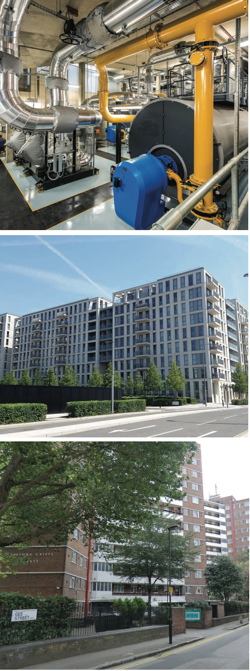Heat networks that deliver
To support its code of practice for heat networks in the UK, CIBSE has devised a series of checklists to help improve the delivery of heat networks — as Matt Snowden explains.
When ‘CP1: Heat networks: code of practice for the UK’ was launched in 2015 it sought to address a key problem that had been bogging down the technology ever since it was first introduced in the UK— lack of confidence. It is a fitting topic for the first ever code of practice that CIBSE (Chartered Institution of Building Services Engineers) has produced, because the technology is set to play a major part in the Government’s strategy to reduce the UK’s reliance on fossil fuels for heating, and this strategy depends on making heat networks more widely used.
CIBSE and the Association for Decentralised Energy (ADE) have now begun the second stage of the process to improve the image of heat networks and make it into a first-choice option for developers in suitable sites by conducting a consultation on the code’s checklists. It is hoped that these new tools will help everyone in the supply chain know and agree what is expected of them, and hold every stakeholder to account.
It is essential that stakeholders can check that CP1 has been met, and the checklists are a key part in this process. Heat networks have suffered from low uptake in the past and have a reputation for not delivering on the original promises made about their performance. This was due to failures across the supply chain, from designers recommending inappropriate projects to installers fitting them badly and FMs failing to maintain them properly.
 |
| Heat networks in action — as illustrated in the CP1 code of practice. From top: King’s Cross energy centre (Photo: Vital Energi), Queen Elizabeth Olympic Park (Photo: Cofely) and the Stafford Cripps Estate in Islington (Photo: AECOM). |
One only needs to look to Scandinavia to see that it doesn’t always have to be this way. Heat networks in Europe are a much more mature concern. Malmo in Sweden and Denmark’s capital Copenhagen use heat networks to supply close to 100% of their heating, while the UK languishes far behind with less than 2% supplied that way.
The code of practice was originally produced to counter these problems, providing minimum standards on the topic where nothing substantial existed before. As with any technology, a lack of information leads to low adoption rates among sceptical clients, engineers are less inclined to become experts in an unpopular system, and so there are few experts to publish more information and few active examples of the technology to provide in-use data. Thus, the cycle begins again. The checklist is the business end of this process, actually holding stakeholders to account on their ability and willingness to follow the code.
The checklists were drafted and trialled during the latter part of 2016, and their effectiveness is currently under scrutiny to ensure that they will do their jobs properly, but they won’t be able to do the job on their own — no matter how well they work.
The checklist methodology also creates a useful evidence pack that runs throughout the stages of the project, from briefing right through to operation. This connects the supply chain and provides an audit trail of decisions.
The checklists are also underpinned by the developer setting performance targets at the initial briefing stage that can actually be used to measure a heat network’s anticipated performance at feasibility and design stages, followed by actual performance in-use. This combination of checking the code requirements have been met, an evidence pack has been produced and the original performance expectations have been met provides a new foundation for the sector.
Clearly, this starts with the clients/developers, as it is their responsibility to ensure that use of the code and the assembly of an evidence pack is specified at the start of the project, but the support and advice of engineers is required to keep it on track. For it to be truly effective, the engineer needs to continuously measure against the original development targets, and this approach strengthens the evidence pack. It is recommended that this whole process is monitored by employing a trained heat-networks assessor to ensure compliance, highlight deficiencies but also to encourage a move beyond minimum standards in delivering the project.
Though the original publication of the code was a big step forward in 2015, it was really only the start of the process that will ultimately result in heat networks becoming a mainstream option.
The need for a clear process to hold stakeholders to account has already been stated, but potentially more important is the will to drive the use and application of the code from all sides involved in construction. Though it is the client’s job to ask for it and to monitor its implementation, all stakeholders need to be willing partners to make the process of following CP1 as smooth as possible.
Ultimately, the success or failure of the CP1 checklist process will determine the future of heat networks in the UK. The potential is there to create sustainable, low-carbon heat networks and a world-leading specialism for UK engineers. But it requires the industry to grasp the nettle and embrace the code, and co-operate with its minimum standards and checking processes.
Matt Snowden is communications executive with the Chartered Institution of Building Services Engineers.








